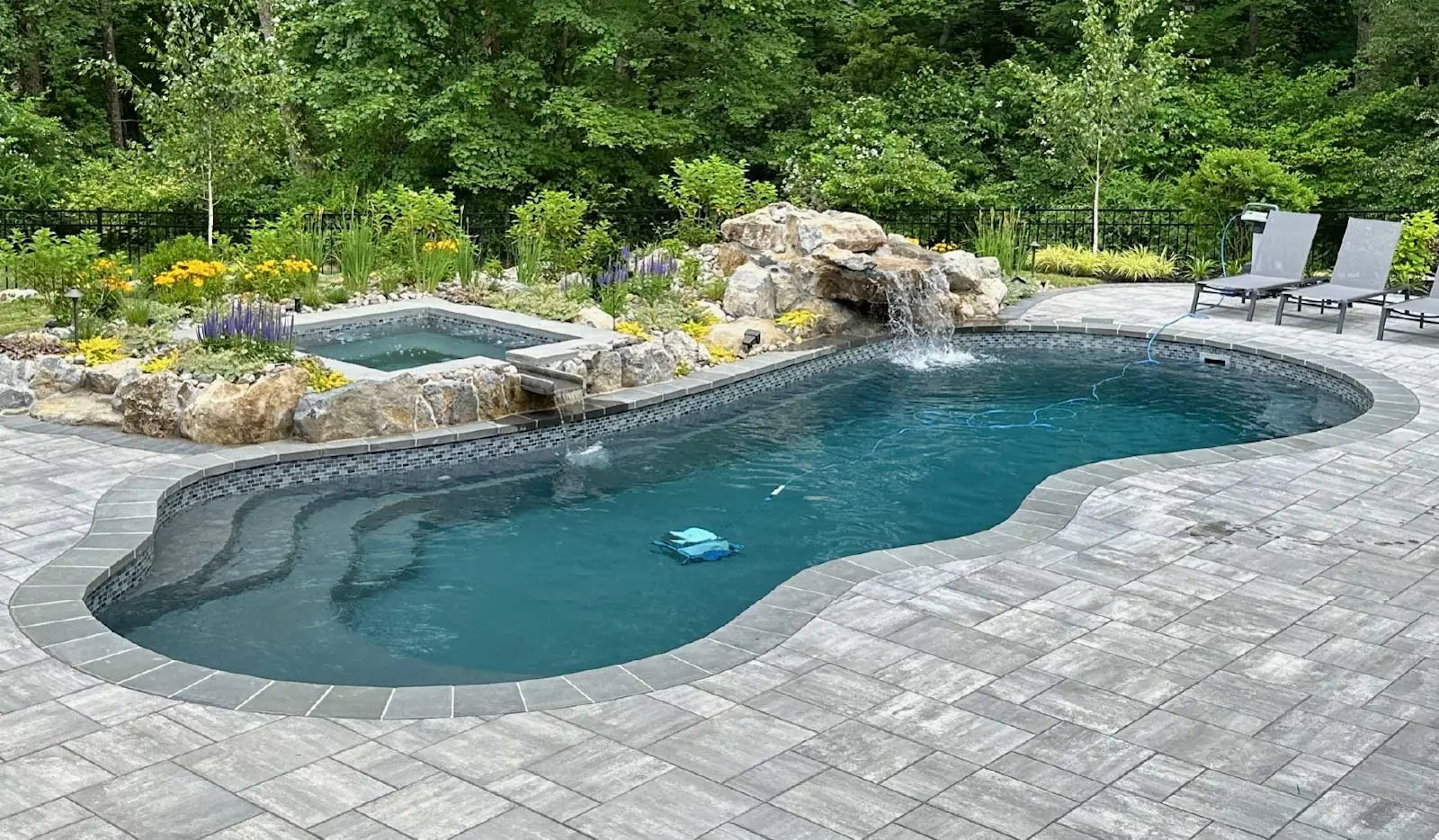
What’s the Difference Between an Inground Pool and a Semi-inground Pool?
Introduction
Have you ever dreamed of having a backyard pool but weren’t sure which type suits your home best? Choosing the right pool isn’t just about aesthetics—it’s about long-term value, maintenance, and how it fits into your lifestyle.
Many homeowners assume that inground pools and semi-inground pools are nearly identical, but the differences can significantly impact your decision. From cost and installation to maintenance and design flexibility, each option has distinct advantages and considerations.
In this guide, we’ll break down the key differences between an inground pool and a semi-inground pool to help you make an informed choice. Whether you’re looking for a luxurious backyard oasis or a budget-friendly option that enhances your outdoor space, understanding these differences is the first step toward your dream pool.
What is an Inground Pool?
Definition & Features
An inground pool is a fully submerged swimming pool installed below ground level, creating a seamless and integrated look within your backyard. These pools are typically made from fiberglass, concrete, or vinyl, offering a variety of design options to suit different aesthetics and functional needs.
Common Designs & Sizes
Inground pools come in a wide range of shapes and sizes, from classic rectangular pools to freeform lagoon-style designs. Even if you have a compact backyard, small inground pools can be customized to maximize space without sacrificing style or functionality.
Pros of Inground Pools
- Durability & Longevity: Built to last for decades with proper maintenance.
- Aesthetic Appeal: Offers a sleek, polished look that blends naturally with landscaping.
- Customization Options: Choose from various depths, shapes, and features like waterfalls or tanning ledges.
- Property Value: Can significantly increase home resale value.
Cons of Inground Pools
- Higher Installation Costs: Requires substantial excavation and construction.
- Longer Construction Time: Can take weeks or even months to complete.
What is a Semi-inground Pool?
Definition & Features
A semi-inground pool is partially installed in the ground, with a portion of the pool’s structure exposed above the surface. These pools are often made from aluminum, steel, or hybrid materials, making them a more flexible option for different landscapes.
Common Designs & Sizes
Semi-inground pools typically have a more limited depth range compared to inground pools. However, they can be designed to complement sloped yards, making them an excellent choice for homeowners dealing with uneven terrain.
Pros of Semi-inground Pools
- More Affordable: Costs less than a fully inground pool.
- Faster Installation: Requires less excavation, reducing construction time.
- Great for Sloped Yards: Works well in uneven landscapes without extensive groundwork.
Cons of Semi-inground Pools
- Limited Customization: Fewer options for depth, shape, and features compared to inground pools.
- Durability Considerations: May not last as long as a concrete or fiberglass inground pool.
Cost Comparison: Which Option is More Affordable?
Inground Pool Costs
- Higher initial investment due to excavation, materials, and labor.
- Long-term value as it enhances property appeal and resale potential.
Semi-inground Pool Costs
- Lower upfront cost, making it a budget-friendly alternative.
- May require more maintenance or structural adjustments over time.
Additional Costs to Consider
- Landscaping & Decking: Enhancements like patios or retaining walls.
- Pool Accessories: Heating systems, lighting, covers, and filtration.
- Maintenance Expenses: Chemicals, cleaning, and potential repairs.
Aesthetic Appeal: Which Pool Looks More Seamless?
Inground Pools
- Fully integrated into the landscape, creating a smooth, uninterrupted look.
- Can be enhanced with decorative tiles, waterfalls, and infinity edges for a high-end appearance.
Semi-inground Pools
- Can be designed with raised decking, retaining walls, or stone finishes to blend into the yard.
- Works well with modern landscaping elements to create a unique, elevated look.
Maintenance Considerations: Longevity and Upkeep
Inground Pools
- Requires regular cleaning, chemical balancing, and seasonal maintenance.
- Materials like fiberglass require less upkeep than vinyl liners, which may need periodic replacements.
Semi-inground Pools
- More exposure to the elements can lead to faster wear and tear.
- May require structural reinforcements over time to maintain stability.
Installation Time: Duration and Complexity
Inground Pools
- Takes several weeks to months due to excavation, foundation work, and finishing details.
Semi-inground Pools
- Faster installation, often completed within a few weeks.
- Less excavation required, making it a more convenient option for many homeowners.
Flexibility in Design: Customization Options
Inground Pools
- Highly customizable in terms of shape, depth, and features.
- Can incorporate vanishing edges, tanning ledges, and integrated spas.
Semi-inground Pools
- More limited in design flexibility.
- Can still be enhanced with decking, landscaping, and water features.
Temperature Regulation: Effects on Water Heating and Cooling
Inground Pools
- Retains heat better due to full submersion in the ground.
- Can be paired with solar or gas heating systems for year-round use.
Semi-inground Pools
- More exposed to external temperatures, making water heating more variable.
- May require additional insulation or covers to maintain warmth.
Structural Considerations: Stability and Durability Over Time
Inground Pools
- Built for long-term durability, especially with fiberglass or concrete construction.
- Less affected by ground movement or erosion.
Semi-inground Pools
- Requires additional reinforcement to prevent shifting or structural issues.
- May need periodic inspections to ensure stability.
Family Suitability: Safety for Kids and Pets
Inground Pools
- Can be equipped with safety fences, alarms, and pool covers.
- Deep ends may pose a risk for younger children.
Semi-inground Pools
- Raised edges can act as a natural barrier, reducing accidental falls.
- Easier to install safety gates or railings around the exposed perimeter.
Choosing the Right Pool: Factors to Consider
Budget
- If cost is a primary concern, a semi-inground pool may be the better choice.
Backyard Layout
- A semi-inground pool works well on sloped landscapes, requiring less excavation.
Long-Term Goals
- If increasing home value is a priority, an inground pool is the superior investment.
Personal Preferences
- Consider aesthetic appeal, maintenance commitment, and customization needs.
Conclusion: Which Pool is Right for You?
Summary of Key Differences
- Inground pools offer luxury, durability, and high customization.
- Semi-inground pools provide affordability, quicker installation, and design flexibility.
Final Thought
The right pool depends on your budget, space, and long-term vision. Consulting a professional can help you determine the best option for your outdoor space.
Call to Action
Explore our premier fiberglass pool designs to find the perfect fit for your backyard. Ready to install your dream pool? Contact us today to get started!

